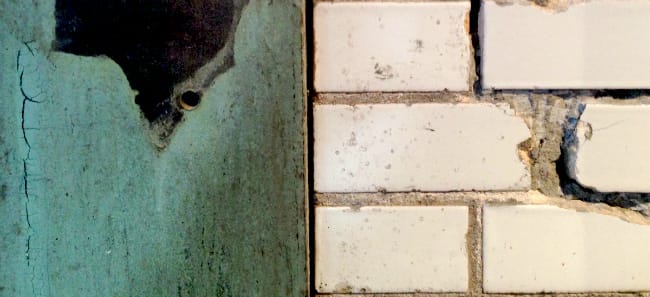

Uh oh...
It appears that you're using a severely outdated version of Safari on Windows. Many features won't work correctly, and functionality can't be guaranteed. Please try viewing this website in Edge, Mozilla, Chrome, or another modern browser. Sorry for any inconvenience this may have caused!
Read More about this safari issue.


Fire Station No. 2 was built near City Park (now MacArthur Park), in the popular Craftsman style of the time, with a large front porch supported by tapered wood columns on stone bases, exposed rafter tails, widely overhanging eaves, and multi-pane casement windows. It also had elements of Spanish Revival style: dramatic parapets rising above a red tiled roof. The porch served as an entry to the two engine bays.

The building originally featured a tile roof and parapets, elements of Spanish Revival styles of architecture. Source: www.ArkansasPreservation.com
The station operated until the late 1950s, and then went through numerous reincarnations as a base for non-profit and civic organizations. While the interior was altered considerably over time, the exterior of the building remains much the same as when it was built, except for the absence of the original parapets and roof tile.
This historic building will soon have a new incarnation as Firehouse Hostel and Museum, a unique low-cost lodging facility for tourists in affiliation with Hostelling International-American Youth Hostels. With the help of donations and considerable volunteer work, the hostel is expected to open later this year.

Great care has been taken by preservationists to retain and restore the unique, historic charm of the fire station while converting it to comfortable, modern accommodations. The boarded engine bays and ceiling openings for fire poles are being incorporated into the décor. The hostel will also serve as a museum for the display of vintage fire fighting memorabilia and equipment—including two trucks—courtesy of the city fire department, which we presume is grateful not to have to haul any of it by hand.

We do the work.
You check your email.
Sign up for our weekly e-news.
Get stories sent straight to your inbox!







Like this story? Read more from Kyran Pittman
In the blur of those swift passing years, some memorable moments stand...
How about the Museum of Native American History? Never heard of it? I...
According to Rachel Silva, an historian with the Arkansas History...
Join the Conversation
Leave a Comment